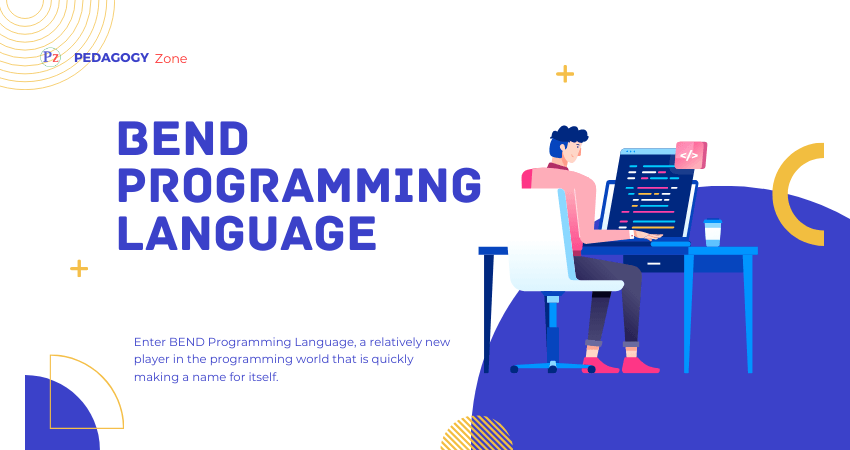The programming world is constantly evolving, with new languages emerging and challenging the status quo. Developers are always on the lookout for tools that offer better performance, ease of use, and flexibility. Enter BEND Programming Language, a relatively new player in the programming world that is quickly making a name for itself.

But what exactly is BEND, and why is it causing such a stir in the developer community?
[sc_fs_faq html=”true” headline=”h2″ img=”” question=”What is the BEND Programming Language?” img_alt=”” css_class=””] BEND is a modern programming language designed to be both powerful and user-friendly. Created with the intention of addressing some of the key pain points developers face today, BEND is all about flexibility and scalability. Whether you’re building web applications, working on backend services, or diving into AI development, BEND offers a set of tools that makes coding more efficient and streamlined. [/sc_fs_faq]
Core Features of BEND
BEND comes packed with features that set it apart from traditional programming languages:
- Flexibility and Scalability: BEND is designed to handle both small and large-scale projects with ease. Its modular structure allows developers to scale their projects without rewriting large chunks of code.
- Cross-Platform Capabilities: Whether you’re developing for Windows, macOS, or Linux, BEND provides seamless cross-platform functionality, making it easier for developers to write code that runs smoothly on different systems.
- Ease of Learning and Use: One of the standout features of BEND is its simplicity. The syntax is intuitive, and the language has been designed with both beginner and seasoned developers in mind.
Why Developers Are Turning to BEND
Developers are flocking to BEND for a variety of reasons:
- Unique Advantages: BEND offers many features that make it stand out, including built-in support for async operations, which is crucial for modern web and mobile apps.
- Community-Driven Development: BEND has a growing community of developers who contribute to its evolution, creating new libraries, frameworks, and tools that make coding in BEND even more efficient.
- Speed and Performance: BEND’s focus on performance means that developers can create applications that are both fast and lightweight, making it ideal for resource-intensive tasks.
Comparison with Other Programming Languages
BEND vs. Python
Python is known for its readability and simplicity, but BEND goes a step further by offering similar ease of use with improved performance.
BEND vs. JavaScript
While JavaScript dominates the front-end world, BEND is emerging as a contender with its versatility, providing both front-end and back-end capabilities.
BEND vs. Rust
Rust is known for its performance and memory safety, but BEND offers a more approachable learning curve, making it a strong alternative for developers who need a balance between power and ease of use.
How BEND is Improving Development Workflows
BEND’s simplified syntax reduces the time spent writing and maintaining code. Developers report that BEND allows for faster deployment times due to its integration with popular DevOps tools, making continuous delivery easier.
BEND’s Role in Emerging Technologies
BEND is quickly becoming a go-to language for cutting-edge fields:
- AI and Machine Learning: BEND’s efficient handling of large datasets and built-in support for AI libraries makes it ideal for AI-driven projects.
- IoT (Internet of Things): Its lightweight nature and flexibility make BEND perfect for IoT devices, where resource constraints are a significant consideration.
- Blockchain: BEND’s ability to handle complex computations and security protocols makes it suitable for blockchain applications.
Challenges of Adopting BEND
Like any new technology, BEND faces its share of challenges:
- Learning Curve: While BEND is relatively easy to learn, developers coming from older languages may face a slight adjustment period.
- Compatibility: Integrating BEND with legacy systems can present challenges, though the language is continuously improving in this area.
How BEND is Solving Common Developer Pain Points
Developers love BEND because it eliminates repetitive coding tasks, enhances code readability, and helps reduce bugs through its clean syntax and structure.
The Growing BEND Developer Ecosystem
The BEND community is thriving, with more libraries, frameworks, and resources emerging daily. Documentation and tutorials are also growing in number, providing support for both new and experienced developers.
BEND for Front-end vs. Back-end Development
Front-end Applications
BEND’s clean syntax and built-in support for UI frameworks make it a strong choice for front-end development.
Back-end Systems
BEND’s speed and efficiency make it an excellent choice for building robust, high-performance back-end systems.
Real-World Applications of BEND
Several companies have already started to implement BEND in their workflows, from startups building innovative apps to open-source projects that are helping the language grow even further.
The Future of BEND Programming Language
Experts predict that BEND will continue to gain traction in the coming years, especially as more developers become aware of its benefits. Ongoing developments and community contributions are helping shape BEND’s future, ensuring it remains relevant and cutting-edge.
| Read More Topics |
| SQL Server Cheat Sheet |
| Distance vector routing algorithm |
| Address mapping in computer networks |





